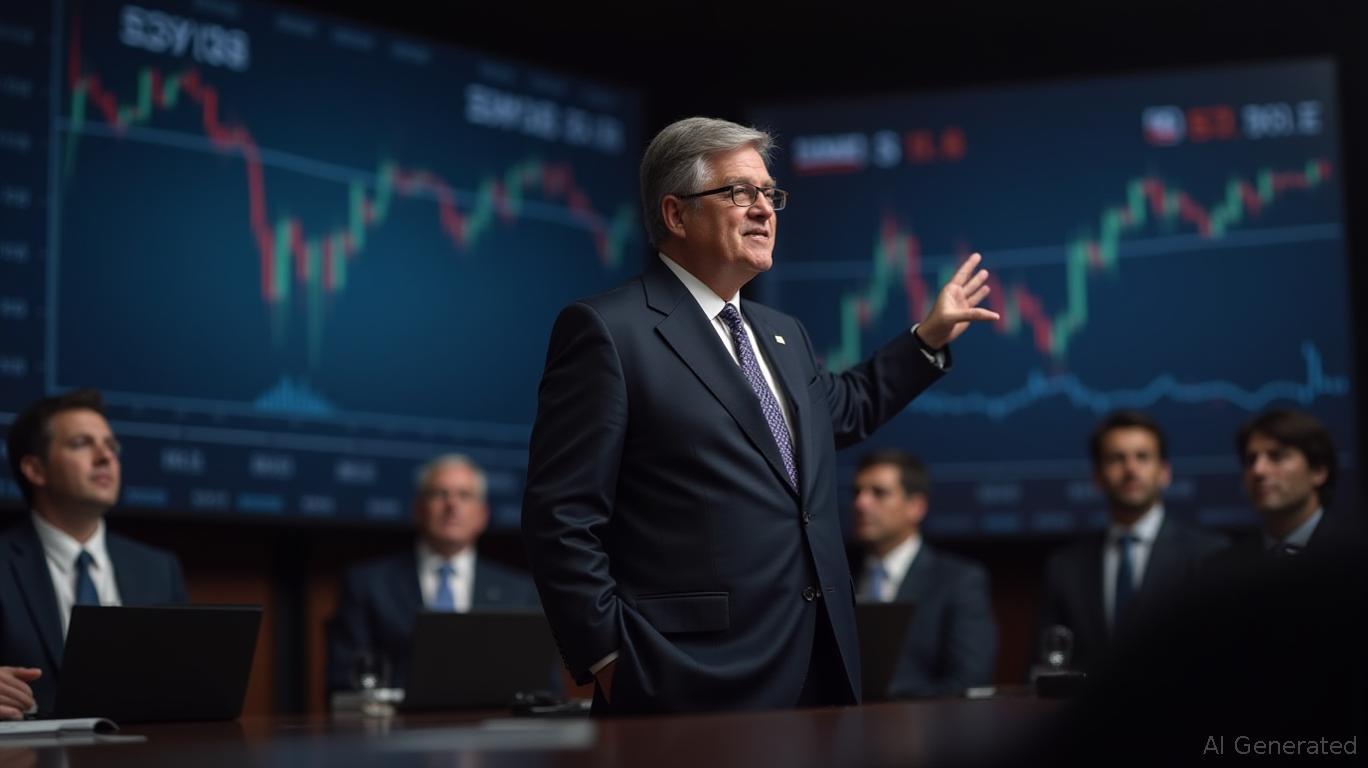Solana News Update: Introduction of Solana ETF Sparks Increased Institutional Investment in Crypto
- Bitwise's BSOL became the first U.S. spot Solana ETF to trade, offering direct SOL exposure with staking rewards and a 0.20% fee waiver for three months. - Seven Solana ETFs including VanEck's VSOL (0.30% fee) await SEC approval, with regulatory delays caused by the government shutdown affecting 21Shares and Grayscale's GSOL conversion. - SOL's $203 price rise and bullish technical patterns suggest potential for $412, aligning with JPMorgan's $3-6B inflow forecasts for a Solana ETF's first year. - Instit
The inaugural U.S. spot
VanEck has also put forward a Solana ETF (VSOL) with a 0.30% fee, one of seven such filings with the SEC, the NerdWallet guide continues. Although VanEck’s ETF does not currently offer a fee waiver, competition among Solana ETFs is intensifying around pricing. Experts point out that the approval of

BSOL’s debut coincides with strong technical sentiment for SOL’s price. On Tuesday, Solana’s token was trading at $203, a 14% rise from its recent low, as traders looked forward to the ETF’s launch, according to
The SEC’s review of crypto ETFs has been stalled due to the ongoing government shutdown, now in its third week as of October 27. While 21Shares’ Solana ETF has received preliminary approval, final authorization is still pending, NerdWallet reported. The shutdown has also postponed the conversion of Grayscale’s Solana Trust (GSOL) into a spot ETF, which TradingView reports is expected to begin trading on Wednesday.
For those not willing to wait, indirect exposure to Solana is possible through futures-based ETFs such as VolatilityShares’ SOLZ (1.15% fee) and ProShares’ SLON (2.14% fee), according to the NerdWallet guide. However, these funds often deviate from SOL’s price due to their leveraged or futures-based nature. Directly holding
The broader impact of Solana ETFs depends on institutional uptake. Bloomberg ETF analyst Eric Balchunas highlighted that regulated vehicles could draw record inflows, pointing to the REX-Osprey Solana Staking ETF’s $12 million in first-day trading as a possible benchmark, according to the TradingView article. Nevertheless, the mixed results of Ethereum ETFs—up 20% since July 2024 but down as much as 50% at times in 2025—illustrate the inherent risks of crypto-related investments, the NerdWallet guide observed.
Disclaimer: The content of this article solely reflects the author's opinion and does not represent the platform in any capacity. This article is not intended to serve as a reference for making investment decisions.
You may also like
Bitcoin Updates: Fed’s Softer Stance Supports Both Economic Expansion and Inflation—Positive Momentum for Crypto
- The U.S. Federal Reserve cut rates by 25 bps to 3.75%-4.00% on October 29, 2025, ending quantitative tightening by December 1, easing liquidity constraints. - Crypto markets initially dipped post-announcement but gained analyst support as lower rates and weaker dollar historically boost Bitcoin and Ethereum as hedges. - Institutional crypto demand remained strong with Coinbase reporting 2,772 BTC inflows and Bitcoin ETFs seeing net inflows, while Tether's USDT supply surpassed $183 billion. - The Fed's "

Bitcoin News Update: Bitcoin Rally Drives $2.8B in Gains While Strategy's Shares Drop 15% Year-to-Date
- Strategy Inc. (MSTR) reported $2.8B Q3 2025 net income from Bitcoin's $70.6B portfolio (640,808 BTC) amid $20B unrealized gains. - New fair value accounting rules enabled profit recognition without selling Bitcoin, reversing $340M 2024 losses and boosting operating income to $3.9B. - CEO Phong Le targets $34B operating income if Bitcoin hits $150K, while $20B 2025 capital raises expanded holdings by 40,000 BTC. - Despite 51.74% BTC gains, shares fell 15.15% YTD due to dilution concerns, contrasting with

MEV's Tendency to Centralize Poses a Challenge to the Fundamental Principles of DeFi
- MEV (Maximal Extractable Value) destabilizes DeFi markets by enabling miners/validators to reorder transactions for profit, imposing a "hidden tax" on retail traders through front-running and sandwich attacks. - Aditya Palepu highlights systemic risks: 80% of MEV costs fall on retail users, while institutions avoid DeFi to mitigate front-running risks, undermining market liquidity and stability. - Trusted Execution Environments (TEEs) encrypt transactions pre-execution to block front-running, but vulnera

MEV Takes Advantage of DeFi Transparency, Triggering Concerns Over Fairness
- MEV exploits blockchain transparency to reorder transactions, creating a "hidden tax" that deters institutional DeFi adoption and harms retail users. - Sandwich attacks and front-running cost retail investors up to 80% of MEV-driven losses, with 24% of Ethereum blocks affected annually. - Trusted execution environments (TEEs) emerge as a solution by privatizing transaction data, potentially unlocking $trillions in institutional capital. - Experts warn MEV centralizes power and inflates costs, requiring g
